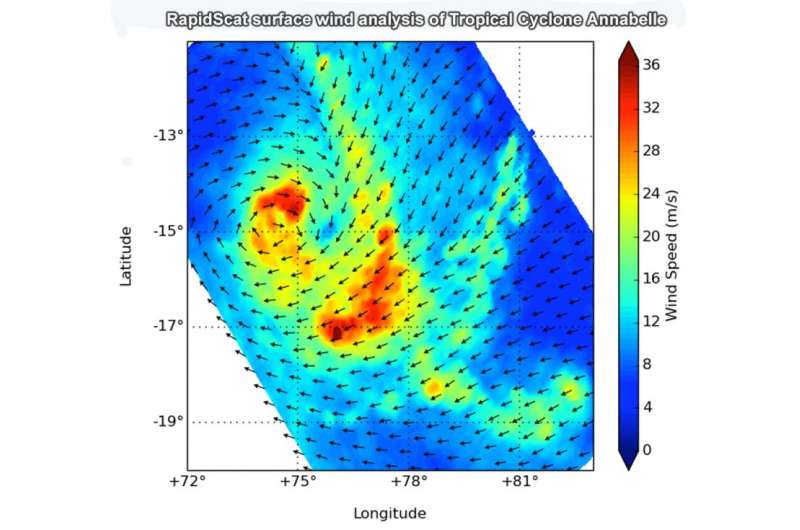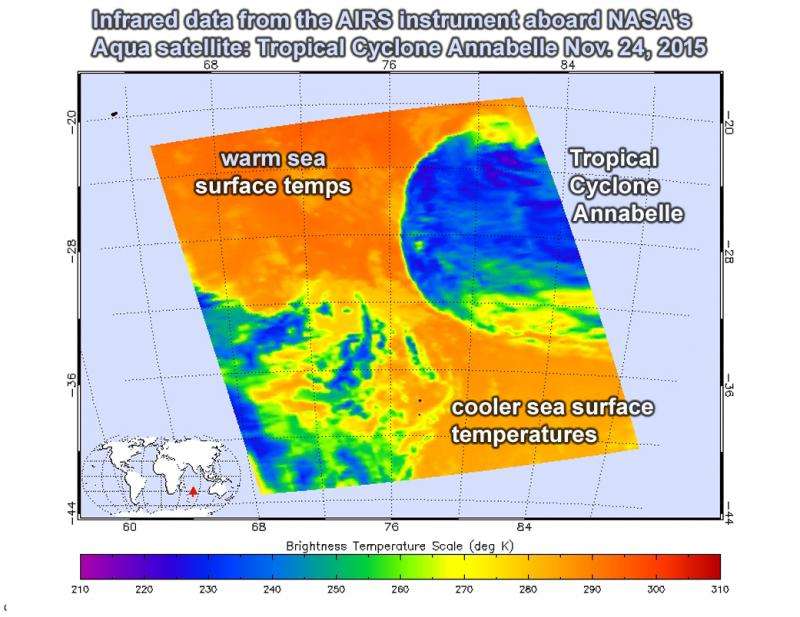NASA sees Tropical Cyclone Annabelle dying bursts

Tropical Cyclone Annabelle ran into adverse atmospheric and oceanic conditions and was fading quickly on Nov. 24. But the day before, NASA's RapidScat instrument saw some dying bursts of wind from the weakening Southern Indian Ocean system.
RapidScat is an instrument that flies aboard the International Space Station and measures surface winds over open waters of oceans. RapidScat gathered wind speed and direction data on Tropical Cyclone Annabelle on Nov. 23 and revealed that the storm was still packing quite a punch. Strongest sustained winds were north-northeast and southeast of the center near 36 meters per second/70 knots/80.5 mph/129.6 kph).
On Nov. 24 at 0847 UTC (3:47 a.m. EST) the Atmospheric Infrared Sounder or AIRS instrument aboard NASA's Aqua satellite captured infrared temperature data on Annabelle. AIRS showed that cloud top temperatures had warmed over the previous day, indicating less uplift in the system and a lesser ability to form the thunderstorms that make up a tropical cyclone.
On Nov. 24 at 1500 UTC (10 a.m. EST), the Joint Typhoon Warning Center issued its final bulletin on the tropical cyclone.
At that time, Tropical cyclone Annabelle's maximum sustained winds had decreased to 35 knots (40 mph/62 kph). The tropical storm was centered near 22.8 degrees south latitude and 81.3 degrees east longitude, about 798 nautical miles south-southeast of Diego Garcia. Annabelle was speeding to the south-southeast at 25 knots (28.7 mph/46.3 kph) over the open waters of the Southern Indian Ocean.
Annabelle has moved into an area where vertical wind shear was blowing at 50 knots, and sea surface temperatures had dropped below the 26.6C/80F threshold needed to maintain a tropical cyclone. Annabelle is expected to dissipate in the next day.

Provided by NASA's Goddard Space Flight Center




















